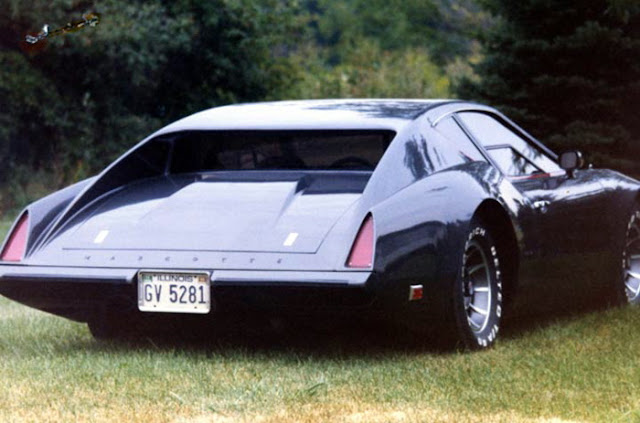Near the end of the era of the Brazilian import ban, one of the most ambitious cars ever produced for that market was developed by a company in Valinhos, Sao Paolo. This notable project would take three years and more than 3 million dollars (USD) to bring to reality.
It drew inspiration from the Ferrari F40 and other supercars of the time, adopting supercar proportions, and advanced construction techniques. It was conceived by Oduvaldo Barranco, assisted by two Argentine racing car designers, and built by Aurora Projetos Automobilísticos Ltda. It was called the Aurora 122C.
 |
| The Aurora 122C, with front & rear open |
Development of the Aurora began in 1989 and employed a number of unique features that set it apart from its peers. It was a mid-engine, two seater design. The chassis was a fiberglass reinforced plastic monocoque, with unequal length a-arm suspension and coil-over shocks front and rear. It also utilized ventilated disc brakes at all four corners.
The engine was sourced from the Brazilian Chevy Monza, a 2.0 liter four cylinder equipped with a Garrett turbocharger, making more than 200bhp. Power was put to pavement with a 5-speed manual transmission driving the rear wheels. The Aurora's performance bested all of its domestic rivals at the time, with a top speed of more than 140mph and a 0-60 time around 8 seconds, according to Quattro Rodas magazine at the time.
 |
| The Aurora 122C makes its debut |
Other innovations included an onboard computer which managed the climate and electrical controls, a bespoke set of fitted luggage tailored for storage in the space behind the seats, and a comprehensive tool set under the bonnet. The interior had a concise layout and was upholstered in leather, commensurate with its upmarket intentions.
The Aurora 122C was first shown in concept form at the 16th Brazilian Motor Show in 1990 and made its production debut the following year. However, as the domestic market was opened to imported competition, the car was rendered obsolete by its European rivals. Only 3 production examples found buyers and by 1993 the dream of the Aurora was at an end.
The project represents a tantalizing glimpse of an alternate future where the Brazilian car industry continued to bloom in isolation. It raised the bar for innovation and
Source:
Lexicar Brazil
 |
| The Aurora 122C |
 |
| The Aurora 122C, from Quattro Rodas |
 |
| The Aurora 122C, in racing guise |
 |
| The Aurora 122C |
 |
| The Aurora 122C, in racing guise |
 |
| The Aurora 122C, engine bay and spare |
 |
| The Aurora 122C cutaway illustration |
 |
| The Aurora 122C interior |















Comments
Post a Comment